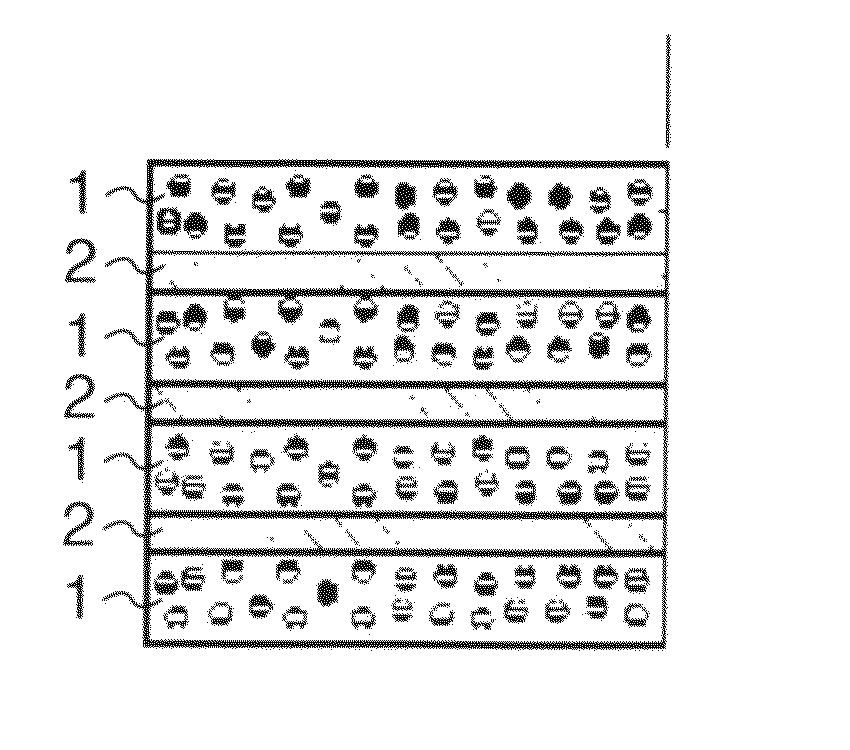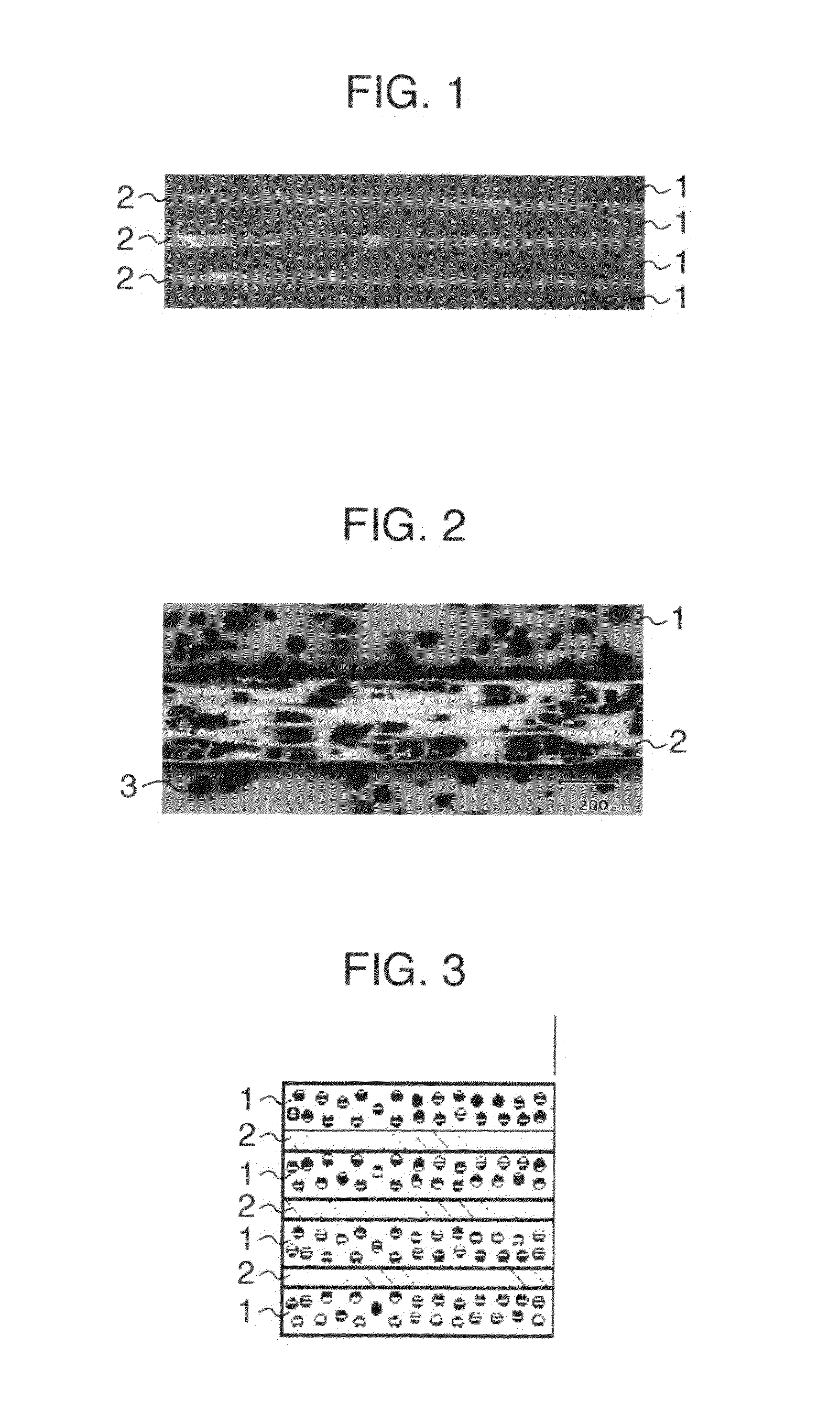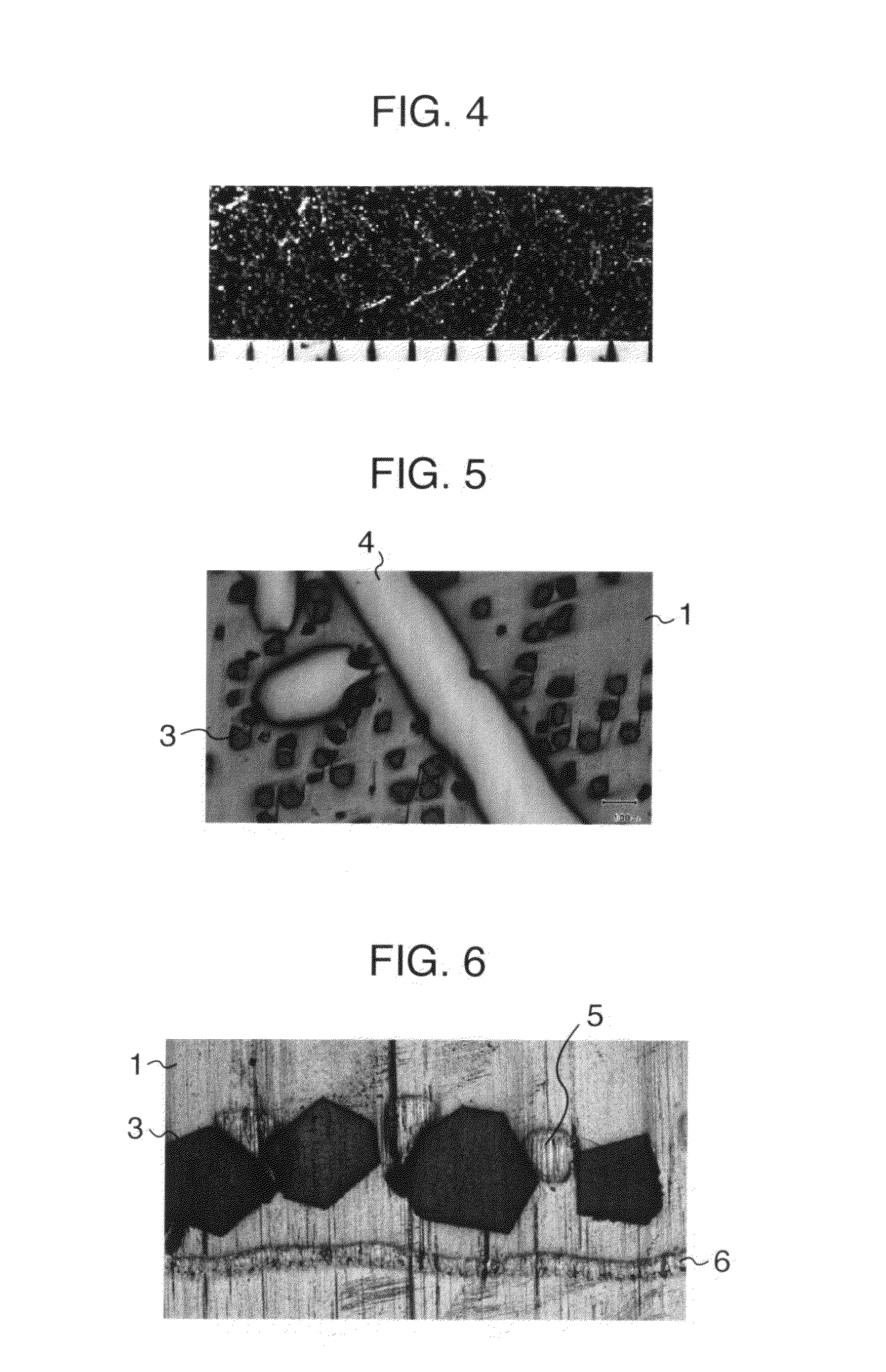High-toughness wear-resistant composite material and a method of manufacturing the same
a composite material and high-toughness technology, applied in the field of composite material high-toughness wear-resistant composite material and a manufacturing method, can solve the problems of micro-cracks cracks in the bits, and stress accumulation in the composite materials, so as to prevent crack generation, improve cutting efficiency, and reduce the effect of friction
- Summary
- Abstract
- Description
- Claims
- Application Information
AI Technical Summary
Benefits of technology
Problems solved by technology
Method used
Image
Examples
example 1
[0050]87 wt % of WC powder having a diameter of 2 μm, 10 wt % of Co having a diameter from 2 μm to 3 μm, and 3 wt % of NiP (P content of 10.7%, 400 mesh or less) were measured and were subjected to ball mill mixing in alcohol for 48 hours. 300 g was extracted from the mixed powder, 10 g of diamond having a diameter from 40 μm to 50 μm was added. Mixing was performed in an alcohol solution, followed by drying.
[0051]4 g of the powder (i.e, compact), produced as above, was input into a carbon mold having a length of 25 mm and a width of 10 mm, and was subjected to pre-pressing at 200 kg / cm2, thereby forming a base layer. A thin copper film (i.e., a copper layer) having a thickness of 0.4 mm was placed on the base layer. 4 g of the prepared powder was added on the copper film, followed by pre-pressing, thereby forming a base layer. A thin copper film (i.e., a copper layer) having a thickness of 0.4 mm was placed on the base layer again. By repeating these process steps, a pressed produc...
example 2
[0056]87 wt % of WC powder having a diameter of 2 μm, 10 wt % of Co having a diameter from 2 μm to 3 μm, and 3 wt % of NiP (P content of 10.7%, 400 mesh or less) were measured and were subjected to ball mill mixing in alcohol for 48 hours. 300 g was extracted from the mixed powder, and 10 g of diamond having a diameter from 40 μm to 50 μm and 9 g of copper thin wires having a length of 5 mm and a diameter of 0.1 mm were added. Mixing was performed in an alcohol solution, followed by drying.
[0057]25 g of the compact powder produced as above was input into a carbon mold having a length of 25 mm and a width of 10 mm, and was subjected to hot pressing in N2 gas at conditions, in which a pressure of 40 MPa and a temperature of 1000° C. were maintained for 30 minutes. It was possible to product a composite wear resistant member in which diamond particles of 10% in volume are distributed across a minute structure of the WC and the phosphor-containing iron group metal. The results observed ...
example 3
[0060]87 wt % of WC powder having a diameter of 2 μm, 10 wt % of Co having a diameter from 2 μm to 3 μm, and 3 wt % of NiP (P content of 10.7%, 400 mesh or less) were measured and were subjected to ball mill mixing in alcohol for 48 hours. 300 g of the mixed powder A was extracted.
[0061]A copper net having 30 mesh and a diameter of 0.3 φ was set to a length 25 mm and a width 10 mm, and diamond particles having an average diameter of 500 μm were fixed to the top of the copper net by brazing, in which a temperature of 950° C. was maintained in vacuum for 5 minutes. The copper net, in which the diamond particles are fixed, are referred to as a copper net B.
[0062]A copper film C having a thickness 0.1 mm, a length 25 mm, and a width 10 mm was prepared.
[0063]4 g of the mixed powder A was input into a carbon mold having a length of 25 mm and a width of 10 mm, and was subjected to pre-pressing at a pressure of 200 kg / cm2. The copper net C, to which the diamond particles were fixed, was pla...
PUM
| Property | Measurement | Unit |
|---|---|---|
| temperature | aaaaa | aaaaa |
| melting point | aaaaa | aaaaa |
| melting point | aaaaa | aaaaa |
Abstract
Description
Claims
Application Information
 Login to View More
Login to View More - R&D
- Intellectual Property
- Life Sciences
- Materials
- Tech Scout
- Unparalleled Data Quality
- Higher Quality Content
- 60% Fewer Hallucinations
Browse by: Latest US Patents, China's latest patents, Technical Efficacy Thesaurus, Application Domain, Technology Topic, Popular Technical Reports.
© 2025 PatSnap. All rights reserved.Legal|Privacy policy|Modern Slavery Act Transparency Statement|Sitemap|About US| Contact US: help@patsnap.com



